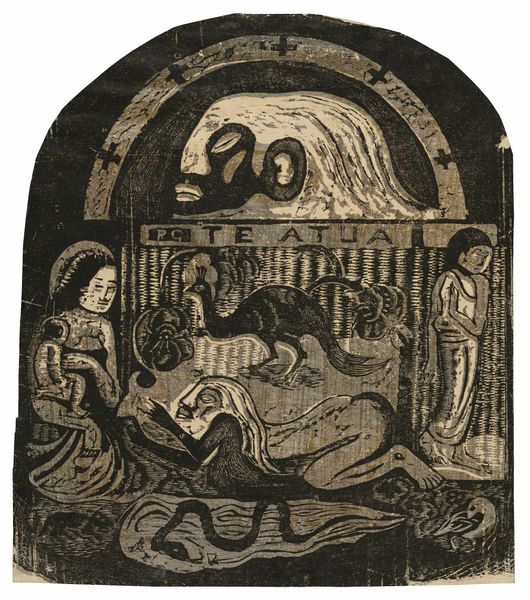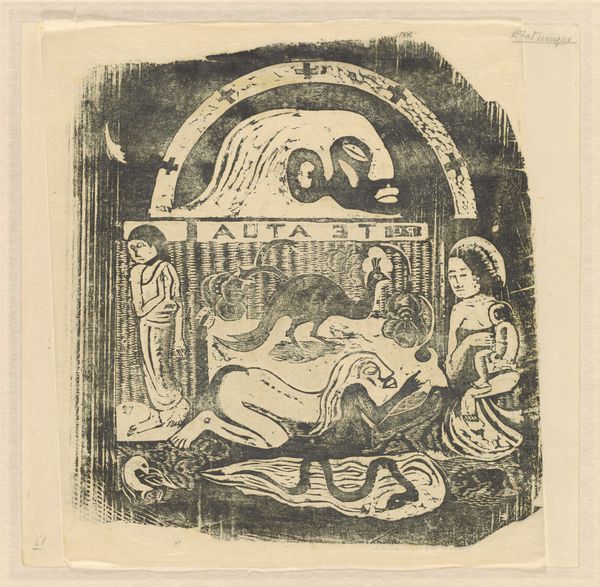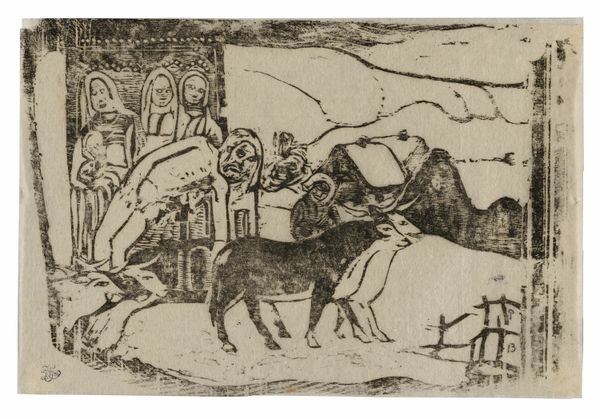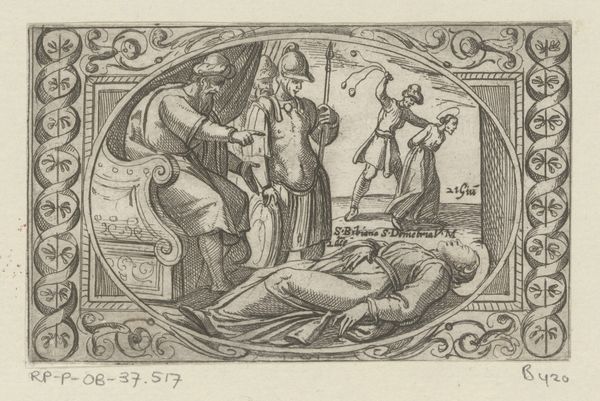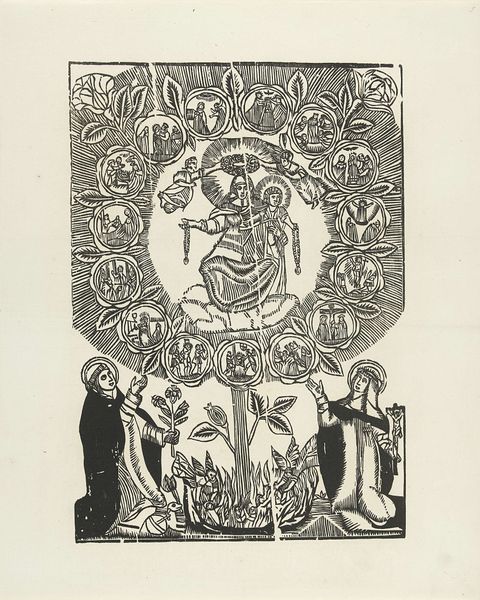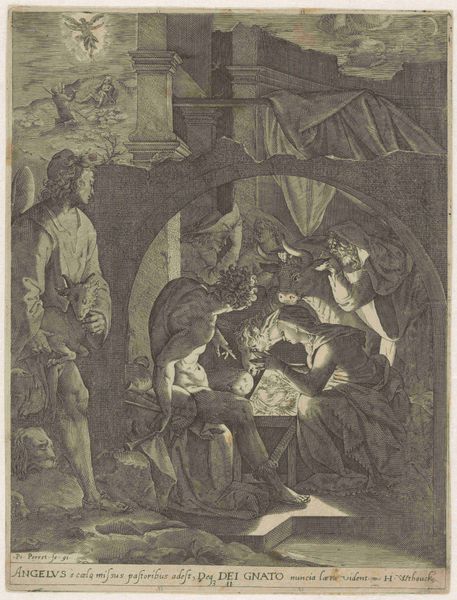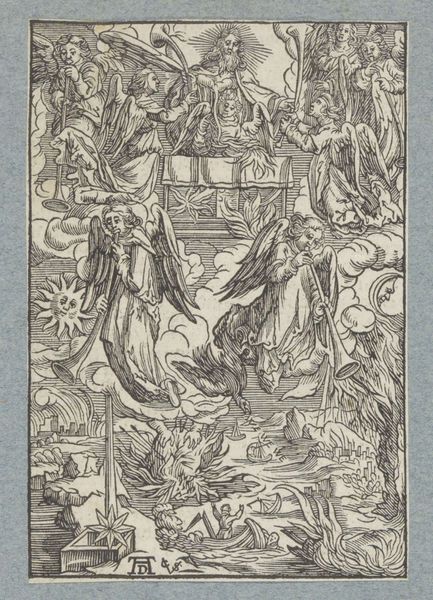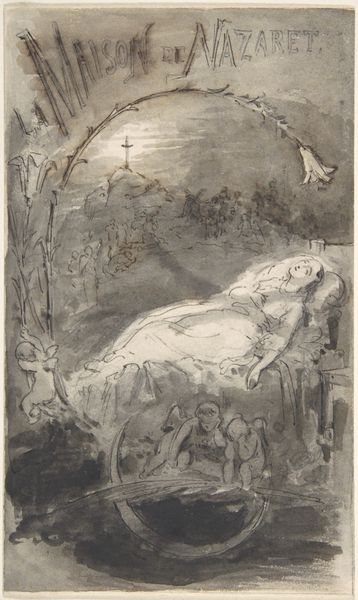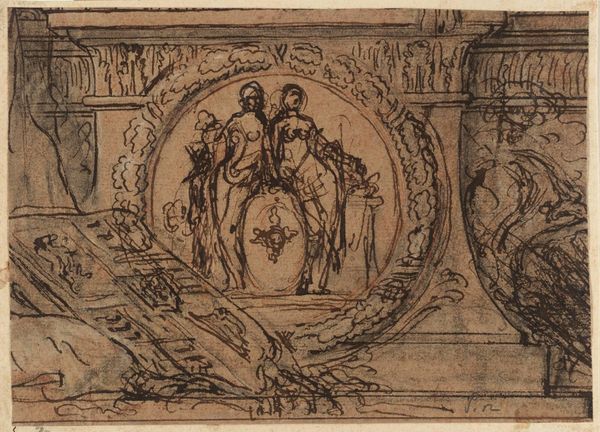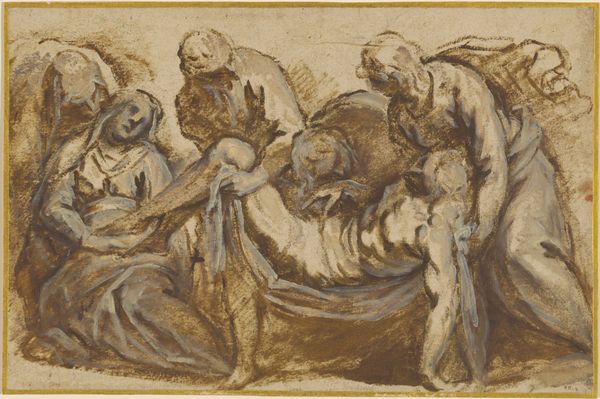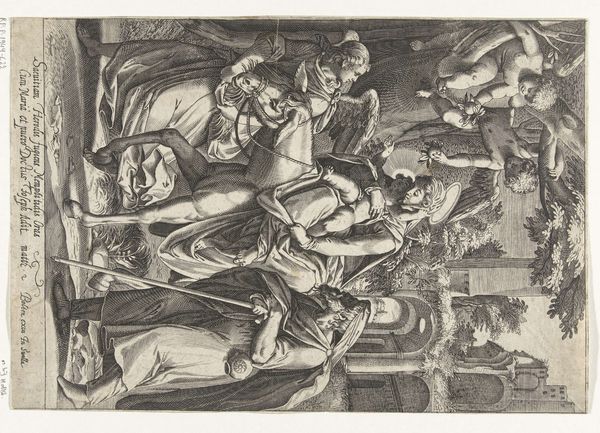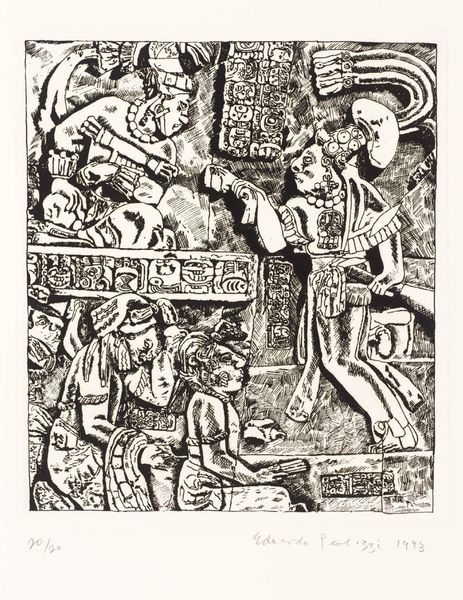
Te atua (The God), from the Suite of Late Wood-Block Prints 1898 - 1899
0:00
0:00
drawing, print, paper, woodcut
#
drawing
#
narrative-art
# print
#
figuration
#
paper
#
linocut print
#
woodcut
#
symbolism
#
nude
Dimensions: 243 × 222 mm (image); 243 × 222 mm (sheet); 243 × 222 mm (secondary support)
Copyright: Public Domain
Paul Gauguin created this wood-block print, "Te atua (The God)", as part of his late suite, filled with Tahitian motifs. Here, we see a tapestry of symbols, most notably the snake. In ancient mythologies, the snake often embodies duality: life and death, good and evil. In many cultures, it represents primal energy, fertility, and transformation. Gauguin juxtaposes this ancient symbol with figures reminiscent of Polynesian gods, set against a basket-weave background that could evoke the idea of civilization. The reclining figure is reminiscent of the water nymph or Venus Anadyomene of classical art, though here, she is grounded by the earth. This pose has appeared repeatedly throughout art history, from antiquity to the Renaissance, each time carrying echoes of beauty, sensuality, and an unspoken connection to nature. Gauguin’s visual language taps into a collective memory, stirring subconscious feelings related to growth, decay, and the eternal dance of creation and destruction. This is the eternal return of the symbol, each apparition a step in the ever-evolving understanding of the human condition.
Comments
No comments
Be the first to comment and join the conversation on the ultimate creative platform.
